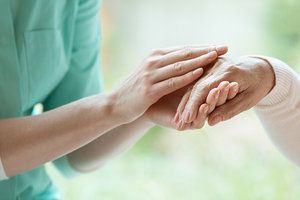Whether you accept it, avoid it or live somewhere in between, insurance coverage has become a defining issue for our profession. Patients increasingly expect to use their benefits, practitioners want to be compensated fairly for their time and expertise, and the system itself remains – at best – fragmented. The encouraging news is that coverage has expanded in meaningful ways. The challenging news is that reimbursement, across the board, remains inadequate.
Hospice Care & Acupuncture: Comfort Care for the End of Life
The National Association of Hospice and Palliative Care Acupuncturists (NAHPCA) was founded in 2013 by Torii Black, a registered nurse and acupuncturist. "People are sometimes confused about what hospice is," said Black.
"The NAHPCA exists to demystify hospice and to bring together acupuncturists, hospice organizations, and businesses to help patients and their families with end of life care," explained Black.
Hospice Vs. Palliative Care
Hospice is comfort care for patients that have been given a medical prognosis of six months or less to live. Hospice is a way to prioritize quality of life over interventions such as invasive surgeries, or medications with uncomfortable side-effects.
Palliative care is a broader term for medical care for chronic, debilitating illness with a prognosis of about one to five years. Palliative care may have a comfort therapy approach like hospice, but also curative measures. Palliative care and hospice both include coordinated care by a case manager to determine the goals of the patient and family.

"Working in hospice and palliative care (HPC) is a calling," said Black. The medical professionals that are drawn to this type of work see the value in helping patients and their families navigate the processes of chronic illness, and end of life in a conscientious way. Every hospice patient goes through the experience differently. A practitioner working with them can help by listening and understanding what the patient needs in that moment.
In HPC the Western medical approach is a lot of dialing back on intensive procedures while managing symptoms. Acupuncture is especially useful in this field because it does not interfere with medications or cause additional side-effects. Acupuncture can relieve some of the most common symptoms experienced by HPC patients such as nausea, pain, headaches, constipation, anxiety, and insomnia, without adding more medications.
About the Association
Black started the NAHPCA because of her experiences working as a nurse in hospice care. While also being a licensed acupuncturist, she saw that there was a need for a modality like acupuncture for HPC patients. The mission of NAHPCA is to:
- To help people die peacefully, utilizing acupuncture treatments.
- To provide a directory for families and patients to find practitioners.
- To advocate for acupuncture coverage through Medicare, which covers more than 75 percent of hospice patients.
The NAHPCA offers training for acupuncturists on the philosophy of hospice, and includes protocols for treating hospice patients and tools to connect with hospice organizations (online and in-person trainings are available). Medicare coverage of acupuncture will be part of its continued visibility as an important part of health care at every stage of life.
To connect patients and families with trained acupuncturists the NAHPCA website has a directory that includes acupuncturists in 25 states, plus Ontario, Canada. If you are interested in learning more about acupuncture for hospice care please visit www.nahpca.com.
Editor's Note: Black is working on a book about hospice and palliative care, and the role of acupuncture. Her book is scheduled to be released next year.



